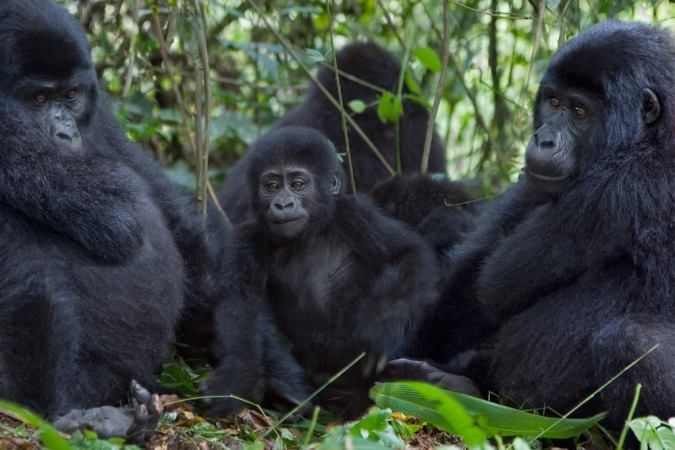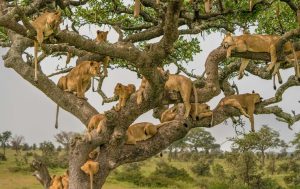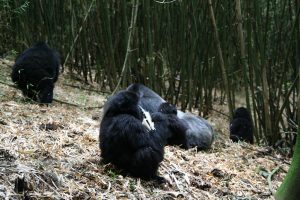Gorilla trekking in Rwanda is one of the most unforgettable wildlife experiences on Earth. Standing a few feet away from a mountain gorilla in its natural habitat is life-changing. But how physically demanding is it? Many travelers wonder: “Is gorilla trekking in Rwanda hard?” The answer isn’t straightforward—it depends on a few key factors.
In this comprehensive guide, we break down everything you need to know about the difficulty level of gorilla trekking in Rwanda, what to expect on the trails, how to prepare, and tips to make your trek more manageable, safe, and enjoyable.
What Makes Gorilla Trekking Challenging?
The difficulty of a gorilla trek in Rwanda varies depending on several elements. Let’s take a closer look at what makes the experience physically and mentally demanding:
- Altitude: Volcanoes National Park is located at an elevation of 2,500 to over 3,000 meters (8,200–9,800 feet). At these heights, even experienced hikers may feel short of breath.
- Terrain: The rainforest terrain can be steep, uneven, and slippery, especially after rain. Treks often involve climbing hills, navigating through thick vegetation, and crossing muddy areas.
- Unpredictable Duration: While some gorilla families are found within 30 minutes, others may take 3–6 hours of trekking through the forest.
- Weather Conditions: Rwanda’s weather is unpredictable. Rain can fall even during the dry season, making trails muddy and difficult.
- Physical Fitness: A reasonable level of fitness is needed, especially for longer treks. However, you don’t need to be an athlete—determination and preparation go a long way.
How Long is the Trek to See Gorillas?
The duration of a gorilla trek in Rwanda varies based on the location of the gorilla family assigned to your group. On average, you can expect:
- Short treks: 1–2 hours round trip
- Moderate treks: 3–4 hours round trip
- Challenging treks: 5–7 hours or more
You spend only one hour with the gorillas once they are located, regardless of how long it took to find them.
How Are Gorilla Groups Assigned?
Each morning, before the trek begins, visitors gather at the Volcanoes National Park headquarters in Kinigi. Guides assign visitors to gorilla families based on:
- Age
- Fitness level
- Group size
- Trekking preferences
If you are concerned about the difficulty, you can request to be placed with a group known for being closer to the trailhead or in gentler terrain. While requests are not guaranteed, park rangers try to accommodate them when possible.
Who Can Do Gorilla Trekking in Rwanda?
Gorilla trekking is accessible to most people in good health. However, keep in mind:
- Minimum age: 15 years old
- No upper age limit, but good physical condition is necessary
- People with knee, back, or respiratory issues should consult a doctor
- If you’re sick with the flu or a cold, you may be denied participation to protect the gorillas
Rwanda is known for offering less strenuous trekking than neighboring countries like Uganda or the DRC, though the challenge is still real.
Can You Hire a Porter to Help?
Yes, and it’s highly recommended.
Porters are available at the park headquarters and can:
- Carry your backpack, camera, and water
- Offer a helping hand during steep or slippery sections
- Reduce your physical strain
- Support local employment and conservation indirectly
The cost is usually $10–$20 USD, and tipping extra is appreciated. Hiring a porter is not a sign of weakness, but rather a smart choice.
Trekking in the Rainforest: What to Expect on the Trail
The forest is dense, lush, and alive. Here’s what to expect while trekking:
- Thick vegetation: Guides and trackers use machetes to cut paths
- Mud: Even in dry season, trails can be wet and slippery
- Steep slopes: Ascending and descending hills is common
- Insects and stinging nettles: Long sleeves and gloves help
- Breathlessness: Due to altitude and exertion
- Sudden weather changes: Rain showers can occur unexpectedly
Despite the challenges, the scenery is spectacular—giant bamboo, tree ferns, and birdsong surround you.
Tips to Make Gorilla Trekking Easier
- Get in shape before your trip
Start walking or hiking several weeks in advance. Focus on leg strength, cardio, and endurance. - Hire a porter
They make your trek safer, more enjoyable, and support the local community. - Bring the right gear
- Waterproof hiking boots
- Rain jacket
- Long pants and sleeves
- Garden gloves
- Daypack with water and snacks
- Walking stick (provided or bring your own)
- Pace yourself
Walk slowly, take breaks, and don’t rush. The guides will work with your pace. - Eat a good breakfast
You’ll need energy for the trek, especially if it lasts several hours. - Stay positive
Trekking is part of the adventure. Every step brings you closer to the gorillas.
How to Mentally Prepare for the Trek
- Expect the unexpected: Treks are unpredictable. Some are short and easy; others long and demanding.
- Trust your guides: They’re professionals who know the forest and the animals.
- Be flexible and patient: Wild animals move. It may take time to find them.
- Remember the reward: The moment you stand before a silverback or watch a baby gorilla play makes every step worth it.
Is the Trek Worth the Effort?
Absolutely. Even the most difficult treks are forgotten the moment you lock eyes with a mountain gorilla. The experience is emotional, humbling, and unforgettable. Many visitors describe it as one of the most meaningful encounters of their lives.
Can Seniors or Less Fit Travelers Participate?
Yes, with the right planning. Consider:
- Requesting an easier gorilla group
- Hiring a porter or even two
- Taking your time and going at your own pace
- Using walking sticks and proper support gear
Some luxury lodges even arrange sedan chairs (human-powered stretchers) for guests unable to hike at all. Though expensive, this ensures that even mobility-challenged individuals can experience gorilla trekking.
Is Gorilla Trekking in Rwanda Hard?
Yes, but manageable. While gorilla trekking in Rwanda can be challenging due to altitude, terrain, and the unpredictable nature of the rainforest it is not impossible for most healthy individuals. With preparation, the right mindset, and the support of guides and porters, people of varying fitness levels can succeed and enjoy the experience.
If you’re willing to put in a bit of effort, the reward is extraordinary: an hour in the presence of one of the rarest animals on earth, deep in one of Africa’s most beautiful forests. That moment makes every step, every climb, and every drop of sweat completely worth it.
Would you like help planning your Rwanda gorilla trek in 2025 or 2026? We can help you create the perfect itinerary, choose a lodge that suits your preferences, and guide you through the permit and packing process.




